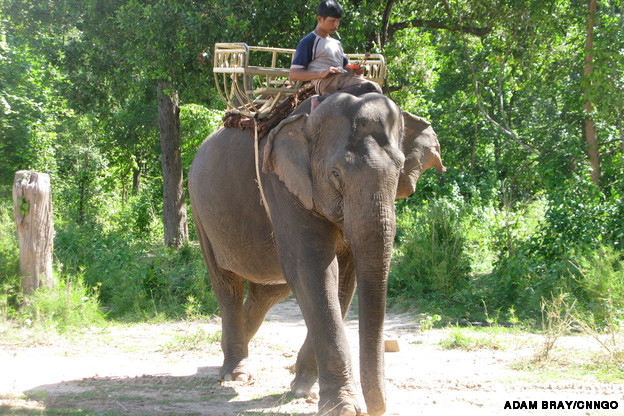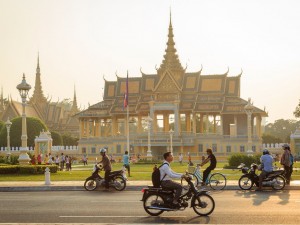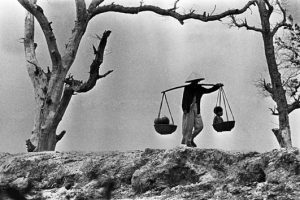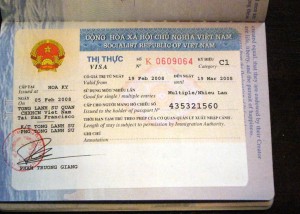Last of Cambodia’s elephant riders

 A mahout pauses for a smoke. Once used for heavy lifting in the jungle, now most elephants haul tourists.
A mahout pauses for a smoke. Once used for heavy lifting in the jungle, now most elephants haul tourists.
It’s early in the morning and my motorbike guide is driving me two hours northeast from Ban Lung, the capital of Ratanakiri, toward the Vietnamese border.
My quest is to find the last of Cambodia’s elephant riders.
These indigenous highlanders have captured, tamed and worked with wild elephants for 2,000 years, but their traditional ways — and the elephants at the heart of their culture — are quickly disappearing.
From an estimated wild population of around 500 elephants in this area in 2001, this has now halved to about 250. There were known to be 162 domesticated elephants in 2002, and this is likely to have significantly fallen too.
We pass plantations of black pepper, cassava, coffee and rubber. The Vietnamese, who have stripped most of the old growth jungle on their side of the border, are now logging these areas and planting vast rubber plantations.
This means ancient tribal lands are being lost and elephant habitats and the traditional livelihoods of indigenous people are being eliminated.
I am told by villagers that in decades past it was not uncommon for a village to have a dozen or more elephants. Now most villages have none, and those that do only have a few.
Also on CNNGo: 12 stylish boutique hotels in Cambodia
 A typical wooden Jarai house on stilts. The Jarai, like many ethnic minorities, are very poor.
A typical wooden Jarai house on stilts. The Jarai, like many ethnic minorities, are very poor.
Fearsome warriors of antiquity
Northeastern Cambodia’s indigenous peoples include the Cham, Krung, Tampuan, Kavet, Steing, Pnong, Kachok, Brau, Ede, Lao, and Jarai. Only the Jarai, Ede, Krung and Pnong still actively work with elephants.
The Jarai, whom I was hoping to meet, were once members of the multi-ethnic kingdom of Champa. The Champa Kingdom was the historical nemesis of ancient Angkor (the Khmer kingdom that once ruled Cambodia).
As renowned elephant riders and the guardians of Cambodia’s northeaster uplands and Vietnam’s Central Highlands, it was the Jarai who likely led the armies of Champa, from atop their elephants, in battles against the temple cities of Angkor in the west.
Also on CNNGo: 10 Cambodian dishes you’ve got to try
 A Jarai man plays a traditional musical instrument. Not only the instruments, but also the people that know how to make or even play them are all becoming scarce.
A Jarai man plays a traditional musical instrument. Not only the instruments, but also the people that know how to make or even play them are all becoming scarce.
Reintegration and assimilation
We turn down a dirt track leading through a grove of cashew trees and into the Jarai village of Kah Vuh.
Thatched Jarai stilt-houses stand on either side, with tall ceramic jars of rice wine and baskets strewn on the porches. Smaller huts stand beside them (built for unmarried girls) and tiny shelters, built by bachelors, perch high on stilts in the forest canopy.
The Cambodian government is working hard to integrate indigenous groups into modern Cambodian society through better education, medical and financial aid.
Tribal children are taught Khmer (the national language) in school, since each group speaks its own unique language. All of this has the unfortunate side effect of diluting tribal cultures.
We head to the back of the village where we find the chief’s wooden stilt-house. Here my guide introduces me to a 20-year-old elephant tamer named Tol.
Tol is wearing a heavy sweatshirt despite the heat. As I swat a mosquito, my guide mentions that Tol was getting over a bout of malaria. I have a lot of sympathy. I am getting over dengue fever.
Also on CNNGo: 10-step guide to Siem Reap
 The elephant named “elephant” grabs a snack. Sadly, this fellow appears to be undernourished.
The elephant named “elephant” grabs a snack. Sadly, this fellow appears to be undernourished.
A tractor you can eat
“He is a 45-year-old male — he still has his tusks,” Tol begins as he leads us into the jungle to meet his elephant.
“We cut the tusks every five years. We sell the ivory to theVietnamese. We get about US$10,000 each time,” he says.
There is a thriving illicit trade in ivory, rhino horn and other endangered species product in Vietnam. The money the villagers can earn from is equivalent to five years’ salary in a regular job.
“Elephants are expensive to buy now. We traded 35 buffaloes for this elephant. That’s worth about US$14,000.”
There’s a blast of air and a deep rumble as we push through the cashew trees. A nervous elephant sways several meters away, with a hind foot chained to a tree root.
Also on CNNGo: 5 best Cambodian beaches
“He’s all alone now. He had three females but they all died of old age,” says Tol. “The nearest elephant is in the next village.”
As we talk the elephant’s trunk runs up and down my body. I reach out to touch his trunk but he steps back. “What’s his name?” I ask.
Tol looked puzzled. “Just ‘Elephant.’” He pauses. “We don’t name them. They are as vital to our livelihoods as a tractor. They can haul a cubic meter of lumber right on top of their back. They can also go places that tractors can’t, and they never break down. But they are not pets.”
“What do you do with them when they die?”
“We eat them,” smirks Tol, “Just like a cow, goat, buffalo or any other farm animal.”
I’m a little taken aback, expecting some syrupy Disney-esque sentiment about mutual reliance and spiritual connection between the Jarai people and their elephants.
Tourists as baggage
“The Jarai tradition of working with elephants is dying out” says Tol. “I learned to work with elephants from my father, and he from his father. Now most people grow big rubber plantations along the highway and use heavy machinery instead. They don’t want to work in the jungle and they don’t need elephants.”
Also on CNNGo: Cambodia: No longer a one-temple pony
It appears that tourism may actually prolong both the existence of Cambodia’s elephants and the tribes’ tradition of working with them. Elephant trekking led by Pnong villagers to waterfalls out of Sen Monorom (Mondulkiri Province) has become particularly popular.
As tourism develops in northeastern Cambodia, more villages may likewise rediscover the traditions that particularly attract tourist dollars.
However, the time for observing the original ways of the indigenous peoples and their elephants is growing short.
getting there
It is possible to reach Ban Lung (the capital of Ratanakiri) by bus from Siam Reap (Cambodia), Pleiku (Vietnam), and Si Phan Don (Laos). However, the easiest route by bus from Phnom Penh, with Phnom Penh Sorya Transport (tel: +855 23 210 859; www.ppsoryatransport.com) for US$12. The journey takes 12 hours. Sen Monorom, the capital of Mondulkiri, is about half-way on the journey. It is a good base from which to explore.








